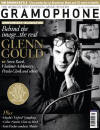Texte paru dans: / Appeared in:
*

GRAMOPHONE (09/2012)
Pour s'abonner /
Subscription information
Decca
4783506

0028947835066 (ID235)
Reviewer: David Vickers
This is a liturgical re-creation of Second Vespers of the Feast Of Our Lady of the Most Holy Rosary as it might have been commemorated at an unspecified north Italian venue in 1612, on the anniversary of the Venetian naval victory over the Turks at the Battle of Lepanto (1571). After a few recent so-called Vespers ‘reconstructions’ of later Baroque repertoire marketed under false pretences, Robert Hollingword’s sincere attention to detail is a much-needed breath of fresh air. This mixture of instrumental music, motets and elaborate polychoral set pieces follows a plausible liturgical sequence; we hear tolling bells and almost all necessary plainchants, assisted eloquently by the Cambridge-based De Profundis; there was not quite enough room on the amply filled 78-minute disc to accommodate the chant for Salve regina but the excellent book notes clearly advise the reader that this was in fact recorded and can be downloaded freely from I Fagiolini’s web pages dedicated to the project (www.ifagiolini.com/1612/).
On another level, this ambitious venture celebrates the 400th anniversaries of the death of Giovanni Gabrieli and the publication of Salmi per cantare e concertare by the Parmesan composer Lodovico Viadana (c1560-1627), who was briefly maestro di cappella at Mantua Cathedral for about three years in the mid 1590s, at the same time as Monteverdi was employed at the Gonzaga court (he did not seem to settle anywhere long, and afterwards probably worked in Padua, Rome, Cremona, around the Veneto and in Bologna). The New Grove praises that Viadana ‘ranks highly among composers of his period for the freshness, fluency and notably expressive quality of his music’, and Hollingworth enthuses warmly about Viadana’s progressive clear division between five solo voices (coro favorito) and accompanying choirs of voices and instrumental groupings. I Fagiolini’s solo consort voices, choral reinforcements and instrumental players interweave seamlessly in seven featured pieces that form a cultivated examination of the hitherto neglected composer’s merits.
Hollingworth’s impeccable delivery of extra-special crunch moments provides plenty of points to knock your socks off, especially during Gabrieli’s colossal Magnificat (only eight of the original 28 separate parts have survived; the missing 20 have been provided by collaborator Hugh Keyte). A few moments caused me to raise my eyebrows in puzzled delight: a sudden interruption of cannon fire, pealing bells and military brass fanfare shocks like a veritable 1812 overture rather than a 1612 Vespers. Also, it takes some getting used to Keyte’s fleshed-out elaboration of Gabrieli’s In ecclesiis, developed from the theory that the familiar version published posthumously in 1615 was only a skeleton score. I am mildly sceptical but perhaps I am blinded by my long-held adoration of the customary version that has been recorded magnificently many times over the years (Andrew Parrott’s 1991 recording is still my benchmark). Yet, regardless of editorial polemics and shocked expectations, one can only relish I Fagiolini’s gutsy soloists — none more so than the thrilling dialogue between high tenor Nicholas Mulroy and bass Greg Skidmore; the sudden arrival of tutti block chords on ‘Deus noster, te invocamus’ is an ideal sucker punch, and the ever-expanding ‘Alleluia’ refrains convey ardent directness.
Following their flamboyant Striggio project last year (5/11), I Fagiolini’s ‘1612 Italian Vespers’ is a thrillingly opulent special event of the sort very few early music ensembles achieve once in a career, let alone twice in quick succession. I suspect that Hollingworth is too canny to let his ensemble become stereotyped exclusively as ambitious purveyors of gargantuan larger-than-life projects that seem like the early music equivalent of Mahler’s Eighth Symphony. However, Decca deserves kudos for promoting Hollingworth’s laudable hunger to explore interesting repertoire of compelling quality that lies neglected apart from the attention of a few scholars; apparently he rejected friendly suggestions that he should record Monteverdi’s famous Vespers of 1610 (in his note he quips it ‘has been recorded once or twice already’).
Moreover, this is an exemplary case of an artist intelligently using the internet to enrich a recording’s lifeblood while entirely avoiding the common pitfall of scrimping on the documentation and presentation of the physical product. The glorious music and comprehensive booklet-notes on their own terms offer plenty of nutrition to the hungry listener but the aforementioned website also offers abundant supporting material in addition — visitors can read a much longer detailed essay by Keyte, download PDFs of his Gabrieli arrangements, watch a documentary video that glimpses into the recording sessions and interviews several protagonists, and download a recording of Giovanni Bassano’s motet Deus noster refugium, which was made during the sessions but could not be squeezed on to the CD. I hope Gabrieli’s quadricentenary attracts plenty more attention of this calibre.
Cliquez l'un ou l'autre
bouton pour découvrir bien d'autres critiques de CD
Click either button for many other reviews


